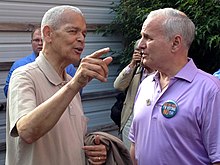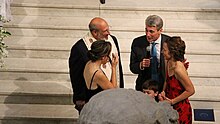This article contains a timeline of significant events regarding same-sex marriage and legal recognition of same-sex couples worldwide. It begins with the history of same-sex unions during ancient times, which consisted of unions ranging from informal and temporary relationships to highly ritualized unions, and continues to modern-day state-recognized same-sex marriage. Events concerning same-sex marriages becoming legal in a country or in a country's state are listed in bold.
Richard John Baker v. Gerald R. Nelson, 291 Minn. 310, 191 N.W.2d 185 (1971), was a case in which the Minnesota Supreme Court decided that construing a marriage statute to restrict marriage licenses to persons of the opposite sex "does not offend" the U.S. Constitution. Baker appealed the decision, and on October 10, 1972, the U.S. Supreme Court dismissed the appeal "for want of a substantial federal question".
In response to court action in a number of states, the United States federal government and a number of state legislatures passed or attempted to pass legislation either prohibiting or allowing same-sex marriage or other types of same-sex unions.

Same-sex marriage has been legal in Hawaii since December 2, 2013. The Hawaii State Legislature held a special session beginning on October 28, 2013, and passed the Hawaii Marriage Equality Act legalizing same-sex marriage. Governor Neil Abercrombie signed the legislation on November 13, and same-sex couples began marrying on December 2. Hawaii also allows both same-sex and opposite-sex couples to formalize their relationships legally in the form of civil unions and reciprocal beneficiary relationships. Civil unions provide the same rights, benefits, and obligations of marriage at the state level, while reciprocal beneficiary relationships provide a more limited set of rights.
Same-sex marriage has been legally recognized in Wisconsin since October 6, 2014, upon the resolution of a lawsuit challenging the state's ban on same-sex marriage. On October 6, the U.S. Supreme Court refused to hear an appeal of an appellate court ruling in Wolf v. Walker that had found Wisconsin's ban on same-sex marriage unconstitutional. The appellate court issued its order prohibiting enforcement of the state's ban on same-sex marriage the next day and Wisconsin counties began issuing marriage licenses to same-sex couples immediately. Wisconsin had previously recognized domestic partnerships, which afforded limited legal rights to same-sex couples, from August 2009 until they were discontinued in April 2018.

Richard JohnBaker and James Michael McConnell are the first same sex couple in modern recorded history known to obtain a marriage license, have their marriage solemnized, which occured on September 3, 1971 and be legally recognized by any form of government.
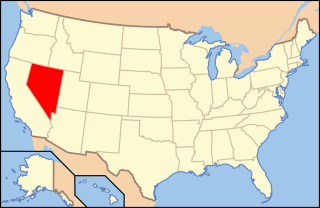
Lesbian, gay, bisexual, and transgender (LGBT) people in the U.S. state of Nevada enjoy the same rights as non-LGBT people. Same-sex marriage has been legal since October 8, 2014, due to the federal Ninth Circuit Court of Appeals ruling in Sevcik v. Sandoval. Same-sex couples may also enter a domestic partnership status that provides many of the same rights and responsibilities as marriage. However, domestic partners lack the same rights to medical coverage as their married counterparts and their parental rights are not as well defined. Same-sex couples are also allowed to adopt, and state law prohibits unfair discrimination on the basis of sexual orientation and gender identity, among other categories, in employment, housing and public accommodations. In addition, conversion therapy on minors is outlawed in the state.
Same-sex marriage has been legally recognized in Wyoming since October 21, 2014. The U.S. state of Wyoming had previously prohibited state recognition of same-sex marriages by statute since 1977 and had enacted a more explicit ban in 2003. An attempt to enact legislation recognizing domestic partnerships as an alternative to marriage for same-sex couples failed in 2013. On October 17, 2014, a federal district court found the state's ban on same-sex marriage unconstitutional. Its ruling took effect on October 21 when state officials notified the court that they would not appeal the decision.
Same-sex marriage has been legal in Utah since October 6, 2014. On December 20, 2013, the state began issuing marriage licenses to same-sex couples as a result of the U.S. District Court for the District of Utah's ruling in the case of Kitchen v. Herbert, which found that barring same-sex couples from marrying violates the U.S. Constitution. The issuance of those licenses was halted during the period of January 6, 2014 until October 6, 2014, following the resolution of a lawsuit challenging the state's ban on same-sex marriage. On that day, following the U.S. Supreme Court's refusal to hear an appeal in a case that found Utah's ban on same-sex marriage unconstitutional, the Tenth Circuit Court of Appeals ordered the state to recognize same-sex marriage.
Same-sex marriage has been legally recognized in Nevada since October 9, 2014, when a federal district court judge issued an injunction against Nevada's enforcement of its same-sex marriage ban, acting on order from the Ninth Circuit Court of Appeals. A unanimous three-judge panel of the Ninth Circuit had ruled two days earlier that the state's ban on same-sex marriage was unconstitutional. Same-sex marriage was previously banned by an amendment to the Constitution of Nevada adopted in 2002. The statutory and constitutional bans were repealed in 2017 and 2020, respectively.
Same-sex marriage has been legally recognized in Maine since December 29, 2012. A bill for the legalization of same-sex marriages was approved by voters, 53–47 percent, on November 6, 2012, as Maine, Maryland and Washington became the first U.S. states to legalize same-sex marriage by popular vote. Election results were certified by the Maine Secretary of State's office and the Governor of Maine, Paul LePage, on November 29.
Same-sex marriage has been legally recognized in North Carolina since October 10, 2014, when a U.S. District Court judge ruled in General Synod of the United Church of Christ v. Cooper that the state's denial of marriage rights to same-sex couples was unconstitutional. Governor Pat McCrory and Attorney General Roy Cooper had acknowledged that a recent ruling in the Fourth Circuit Court of Appeals and the U.S. Supreme Court's decision not to hear an appeal in that case established the unconstitutionality of North Carolina's ban on same-sex marriage. State legislators sought without success to intervene in lawsuits to defend the state's ban on same-sex marriage.
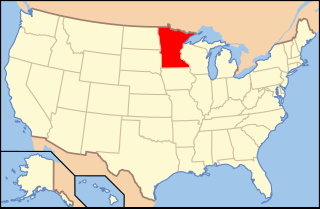
Lesbian, gay, bisexual, and transgender (LGBT) people in the U.S. state of Minnesota have the same rights and responsibilities as non-LGBT people. Minnesota became the first U.S. state to outlaw discrimination based on sexual orientation and gender identity in 1993, protecting LGBT people from discrimination in the fields of employment, housing, and public accommodations. In 2013, the state legalized same-sex marriage, after a bill allowing such marriages was passed by the Minnesota Legislature and subsequently signed into law by Governor Mark Dayton. This followed a 2012 ballot measure in which voters rejected constitutionally banning same-sex marriage.
Same-sex marriage has been legally recognized in Indiana since October 6, 2014. The state had previously restricted marriage to different-sex couples by statute in 1986. By legislation passed in 1997, it denied recognition to same-sex relationships established in other jurisdictions. A lawsuit challenging the state's refusal to grant marriage licenses to same-sex couples, Baskin v. Bogan, won a favorable ruling from the U.S. District Court for the Southern District of Indiana on June 25, 2014. Until the Seventh Circuit Court of Appeals granted an emergency stay of the district court's ruling on June 27, most Indiana counties issued marriage licenses to same-sex couples. The Seventh Circuit affirmed the district court's ruling in Baskin on September 4. A ruling in Bowling v. Pence stated that the state must recognize same-sex marriages performed out-of-state and the decision was stayed until the Seventh Circuit ruled on the merits in similar cases. It also stated that the ruling would remain stayed if the circuit court stayed its decision in the related cases.
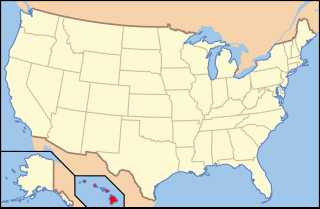
Lesbian, gay, bisexual, and transgender (LGBT) people in the U.S. state of Hawaii enjoy the same rights as non-LGBT people. Same-sex sexual activity has been legal since 1973; Hawaii being one of the first six states to legalize it. In 1993, a ruling by the Hawaiʻi Supreme Court made Hawaii the first state to consider legalizing same-sex marriage. Following the approval of the Hawaii Marriage Equality Act in November 2013, same-sex couples have been allowed to marry on the islands. Additionally, Hawaii law prohibits discrimination on the basis of both sexual orientation and gender identity, and the use of conversion therapy on minors has been banned since July 2018. Gay and lesbian couples enjoy the same rights, benefits and treatment as opposite-sex couples, including the right to marry and adopt.

Lesbian, gay, bisexual, and transgender (LGBT) people in the U.S. state of Wisconsin have many of the same rights and responsibilities as heterosexuals; however, the transgender community may face some legal issues not experienced by cisgender residents, due in part to discrimination based on gender identity not being included in Wisconsin's anti-discrimination laws, nor is it covered in the state's hate crime law. Same-sex marriage has been legal in Wisconsin since October 6, 2014, when the U.S. Supreme Court refused to consider an appeal in the case of Wolf v. Walker. Discrimination based on sexual orientation is banned statewide in Wisconsin, and sexual orientation is a protected class in the state's hate crime laws. It approved such protections in 1982, making it the first state in the United States to do so.
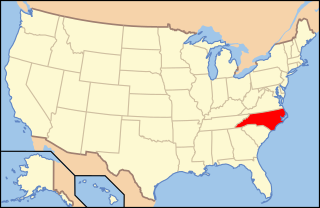
Lesbian, gay, bisexual, and transgender (LGBT) people in the U.S. state of North Carolina may face legal challenges not experienced by non-LGBT residents, or LGBT residents of other states with more liberal laws.
This article contains a timeline of significant events regarding same-sex marriage in the United States. On June 26, 2015, the landmark US Supreme Court decision in Obergefell v. Hodges effectively ended restrictions on same-sex marriage in the United States.
The U.S. state of Texas issues marriage licenses to same-sex couples and recognizes those marriages when performed out-of-state. On June 26, 2015, the United States legalized same-sex marriage nationwide due to the U.S. Supreme Court's decision in Obergefell v. Hodges. Prior to the U.S. Supreme Court's ruling Article 1, Section 32, of the Texas Constitution provided that "Marriage in this state shall consist only of the union of one man and one woman," and "This state or a political subdivision of this state may not create or recognize any legal status identical or similar to marriage." This amendment and all related statutes have been ruled unconstitutional and unenforceable. Some cities and counties in the state recognize both same-sex and opposite-sex domestic partnerships.

This is a timeline of notable events in the history of the lesbian, gay, bisexual, and transgender community in the United States.
